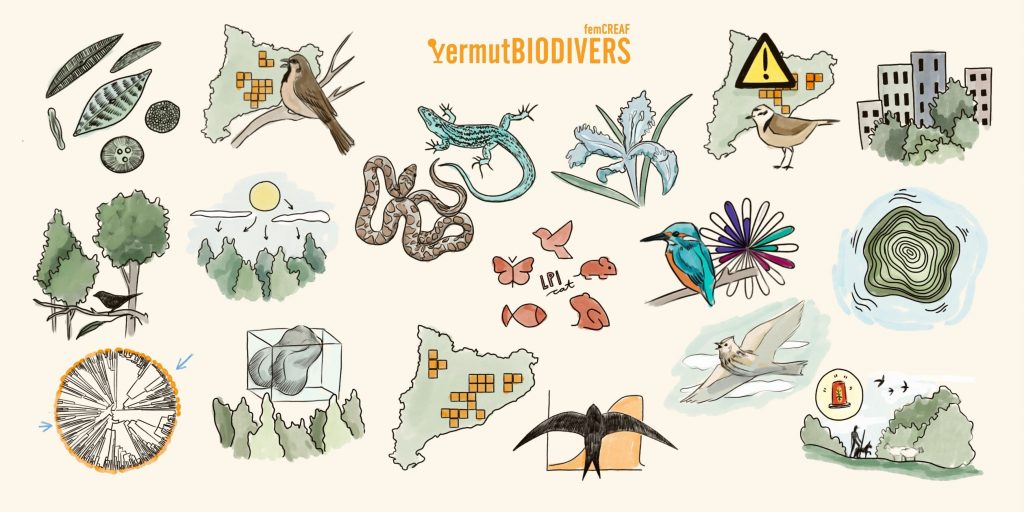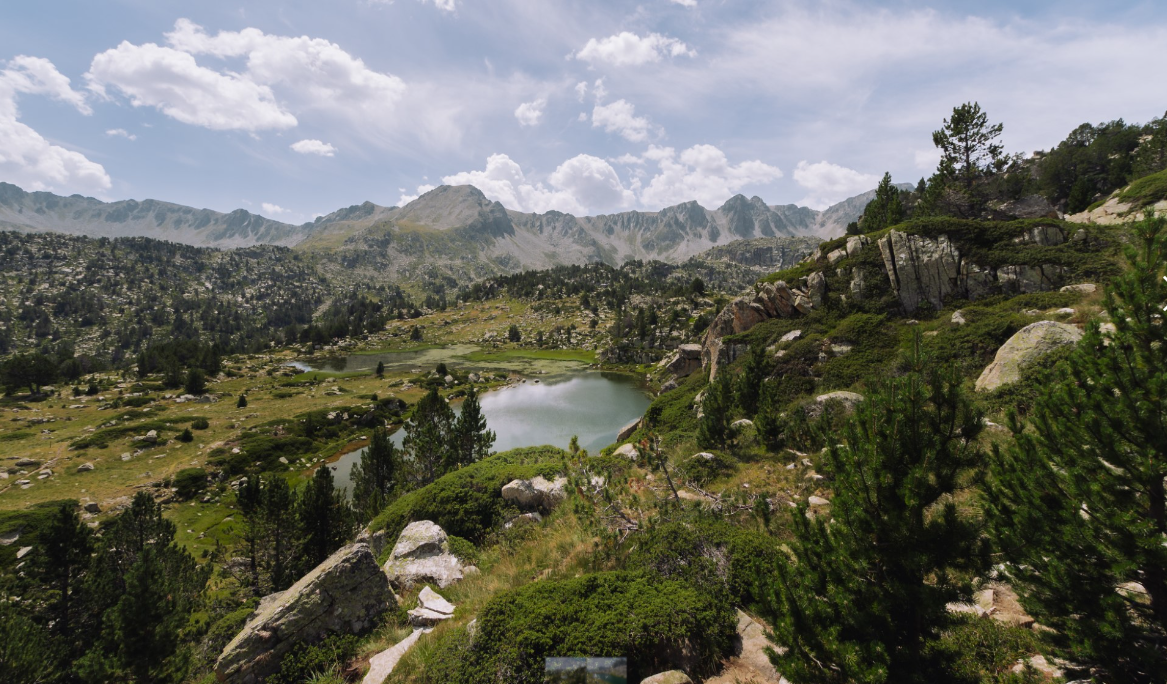On March 15, CREAF held the second edition of its thematic ‘vermuts’, with biodiversity as the common thread of the presentations and the networking session this time. In particular, 17 researchers shared their studies with more than 60 attendees.
The host of the session and CREAF’s impact manager, Anabel Sánchez, moderated the event with humour and diligence. On the other hand, researchers Sandra Saura and Lluís Brotons acted as ambassadors of the event, inviting speakers to participate and supervising the scientific aspect of the presentations with questions and conclusions.
A wide variety of topics were covered in this issue, including:
- The effects of the armed conflict in Syria on nature conservation.
- Species monitoring models.
- Strategies for increasing tree diversity.
- Urban biodiversity.
- The connection between science and public policy.
- Ecological and evolutionary consequences of global change in diverse habitats.
- The integration of bird data on a European scale (EBBA Live Farmland).
- Indicators of the state of biodiversity in Catalonia (Living planet index).
- Soil biodiversity inventory (SISEBIO project).


Among the conclusions, the ambassadors emphasized that CREAF has extensive experience in biodiversity research, both in terms of geographical scale (local and global) and types (genetic, species and ecosystem).). Another axis promoted by the centre is to monitor changes in biodiversity to understand their causes and favour informed decisions in the political sphere: human activities, climate change, introduction of exotic species, etc. Laura Fraile, an illustrator from CREAF’s communication department, also illustrated the presentations and conclusions.

An opportunity to meet and learn
Thematic ‘vermuts’ are internal face-to-face symposia in which CREAF staff share their research on a specific topic related to the centre’s lines of research. These sessions are aimed at all CREAF staff and have a double objective: to learn and keep up to date with the work of colleagues and an opportunity to discover connections and possible alliances.. All this accompanied by a snack and a vermouth at the end.
The format of the presentations is 5+5 – 5 minutes of presentation, followed by another 5 minutes of questions and answers and debate – in which the speakers answer three key questions: what do you do, why do you do it, and what is the impact of your research?
The first edition of the ‘vermut’ focused on forestry research and the third is planned for the end of 2023.
This action is part of the Severo Ochoa “ULandscape” funded in 2019 by the Agencia Estatal de Investigación of the Spanish Ministry of Science and Innovation to support Research Centres of Excellence.







